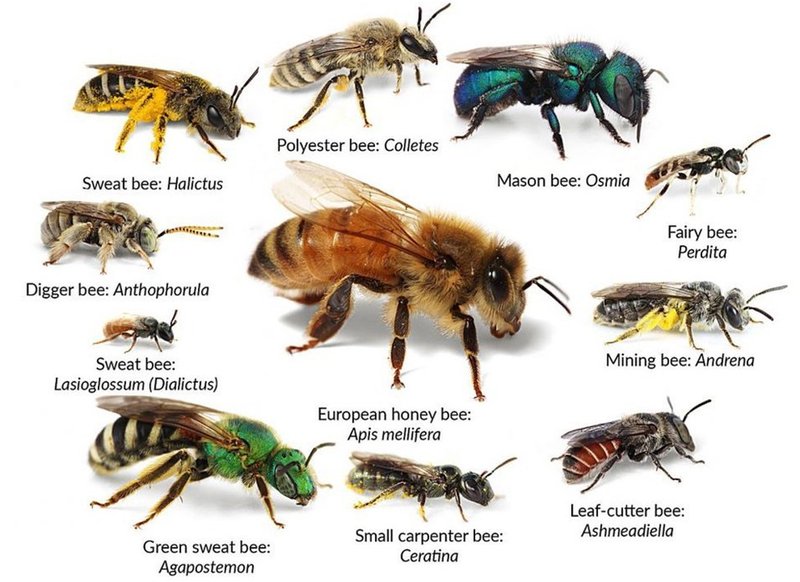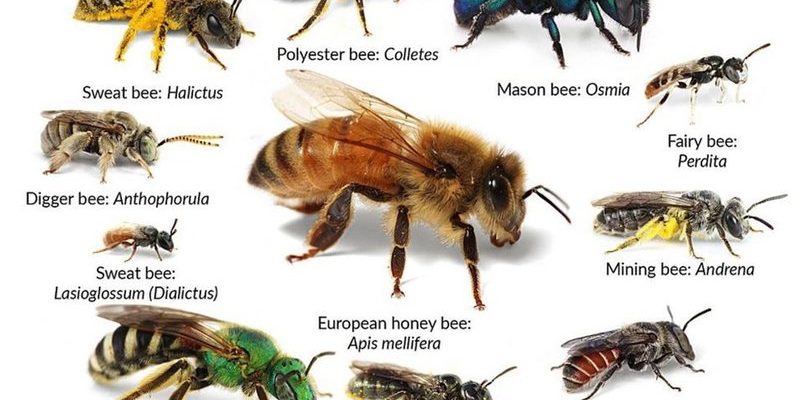
So, what’s the deal with Blue Banded Bees compared to other types? You might be surprised at how different they are in appearance, behavior, and even preferences. Grab a cup of coffee, and let’s dive into the buzzing world of bees and explore what makes the Blue Banded Bee distinct from its buzzing cousins.
Appearance: How the Blue Banded Bee Stands Out
One of the first things you’ll notice about the Blue Banded Bee is its striking coloration. These bees have amazing blue bands across their bodies, which is a real showstopper compared to more common bees. Honeybees, for instance, usually sport a golden brown hue, while bumblebees tend to be predominantly black and yellow. The vivid blue of the Blue Banded Bee isn’t just for show; it helps them blend into certain flowers, making them skilled pollinators.
When you look closer, you’ll see that the Blue Banded Bee is also smaller and more slender than many other species. While a typical honeybee might be about 15 millimeters long, the Blue Banded Bee usually measures around 10–12 millimeters. This compact size allows them to navigate more easily through narrow spaces in flowers, accessing nectar and pollen that larger bees might miss.
So, if you’re walking through a garden and spot a bee with those dazzling blue stripes, it’s a sure sign you’re in the presence of a Blue Banded Bee.
Behavior: Unique Pollination Techniques
Here’s the thing: Blue Banded Bees have a fascinating way of pollinating. Unlike their honeybee cousins, which gather pollen and nectar to bring back to the hive, Blue Banded Bees are known for their buzz pollination technique. What does this mean? When they land on a flower, they vibrate their flight muscles, creating a buzzing sound that helps release pollen from the flower’s anthers.
This buzzing is crucial for certain plants, like tomatoes and blueberries, making the Blue Banded Bee an important player in their pollination. Honeybees can’t do this buzzing pollination, which is why you might find Blue Banded Bees buzzing away busily on these specific plants. It’s like having a special skill set in the bustling bee community!
Many other bees, such as mason bees or leafcutter bees, have their own unique behaviors too. However, none quite match the buzz pollination style of the Blue Banded Bee, reinforcing its vital role in the ecosystem.
Habitat: Where These Bees Thrive
You might be wondering where to find these vibrant little pollinators. Blue Banded Bees are often spotted in Australia, primarily in urban gardens and wildflowers. They prefer open environments with plenty of native plants, making them adaptable to different habitats. On the other hand, honeybees are commonly found in managed hives, often in agricultural areas where they can be used for crop pollination.
In contrast, many bumblebees prefer cooler climates and tend to nest in the ground or even in abandoned rodent holes. This means that the Blue Banded Bee’s choice of habitat sets it apart. They thrive in areas where floral diversity exists, which is crucial for their survival.
Understanding these habitat preferences helps gardeners and farmers create welcoming environments for Blue Banded Bees and ensure they can continue their essential pollination work.
Diet: What Blue Banded Bees Love to Eat
When it comes to their diet, Blue Banded Bees are pretty selective. They mainly feed on nectar and pollen from a variety of plants, especially those that produce tubular flowers. Some of their favorites include Australian native flowers like the *Melaleuca* and *Hakea*. This selective feeding not only fuels their energy but also enhances pollination effectiveness.
In comparison, honeybees are often generalists, meaning they’re not picky eaters and will gather nectar from a wide range of flowers. This adaptability allows honeybees to thrive in various environments but can lead them to compete with other bee species for nectar.
It’s fascinating how diet impacts the roles bees play in ecosystems. Blue Banded Bees, with their specific preferences, help ensure that certain plants are pollinated effectively, while honeybees provide broader coverage across different plants.
Life Cycle: Unique Traits of Blue Banded Bees
Let’s take a closer look at how Blue Banded Bees grow up. Their life cycle starts when the female bee lays eggs in small burrows, usually in sandy soil. After a while, the larvae emerge and feed on the pollen ball provided by their mother. This nurturing stage ensures the larvae have the nutrition they need to grow strong.
Unlike honeybees, where a hive thrives together, Blue Banded Bees are solitary creatures. Each female takes on the role of building her own nest, which adds a unique twist to their life cycle. Other bees, like bumblebees, can work together in colonies, but this solo approach means Blue Banded Bees have to be a little more resourceful when it comes to finding food and shelter.
As they mature, these bees emerge in the spring, ready to start the cycle all over again. This cycle creates a fascinating dynamic in the world of bees, where different species have adapted various strategies for survival and reproduction.
Conservation Status: Protecting the Blue Banded Bee
Here’s the thing: many bee species, including the Blue Banded Bee, face threats due to habitat loss and climate change. Urbanization and agricultural practices can disrupt the delicate ecosystems they rely on. This makes conservation efforts essential.
Preserving natural habitats and planting native flowers can significantly help support these bees. Unlike honeybees, which are often managed by beekeepers, Blue Banded Bees need natural spaces to thrive. Community gardens that focus on native plant species can create a haven for them, promoting biodiversity and ecological health.
By understanding the challenges these bees face, we can all play a part in their conservation. Simple actions like reducing pesticide use and planting native flowers can make a massive difference in supporting the Blue Banded Bee and other native pollinators.
In exploring the differences between the Blue Banded Bee and other bee types, it’s clear that each species brings something special to the table. From their striking appearance to their unique pollination methods, Blue Banded Bees prove that there’s so much more to the bee world than meets the eye.
By appreciating and protecting these incredible insects, we contribute to the health of our ecosystems and the beauty of nature. Bees, like the Blue Banded Bee, play a crucial role in pollinating the plants we love and rely on. Let’s celebrate their uniqueness and do our part to keep them buzzing around for generations to come!

